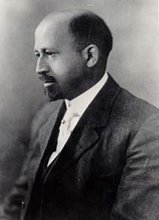Hat tip: NYTimes.com:
More Profit and Less Nursing at Many Homes
By CHARLES DUHIGG
Published: September 23, 2007
Habana Health Care Center, a 150-bed nursing home in Tampa, Fla., was struggling when a group of large private investment firms purchased it and 48 other nursing homes in 2002.
The facility’s managers quickly cut costs. Within months, the number of clinical registered nurses at the home was half what it had been a year earlier, records collected by the Centers for Medicare and Medicaid Services indicate. Budgets for nursing supplies, resident activities and other services also fell, according to Florida’s Agency for Health Care Administration.
The investors and operators were soon earning millions of dollars a year from their 49 homes.
Residents fared less well. Over three years, 15 at Habana died from what their families contend was negligent care in lawsuits filed in state court. Regulators repeatedly warned the home that staff levels were below mandatory minimums. When regulators visited, they found malfunctioning fire doors, unhygienic kitchens and a resident using a leg brace that was broken.
“They’ve created a hellhole,” said Vivian Hewitt, who sued Habana in 2004 when her mother died after a large bedsore became infected by feces.
Habana is one of thousands of nursing homes across the nation that large Wall Street investment companies have bought or agreed to acquire in recent years.
Those investors include prominent private equity firms like Warburg Pincus and the Carlyle Group, better known for buying companies like Dunkin’ Donuts.
As such investors have acquired nursing homes, they have often reduced costs, increased profits and quickly resold facilities for significant gains.
But by many regulatory benchmarks, residents at those nursing homes are worse off, on average, than they were under previous owners, according to an analysis by The New York Times of data collected by government agencies from 2000 to 2006.
The Times analysis shows that, as at Habana, managers at many other nursing homes acquired by large private investors have cut expenses and staff, sometimes below minimum legal requirements.
Regulators say residents at these homes have suffered. At facilities owned by private investment firms, residents on average have fared more poorly than occupants of other homes in common problems like depression, loss of mobility and loss of ability to dress and bathe themselves, according to data collected by the Centers for Medicare and Medicaid Services.
The typical nursing home acquired by a large investment company before 2006 scored worse than national rates in 12 of 14 indicators that regulators use to track ailments of long-term residents. Those ailments include bedsores and easily preventable infections, as well as the need to be restrained. Before they were acquired by private investors, many of those homes scored at or above national averages in similar measurements.
In the past, residents’ families often responded to such declines in care by suing, and regulators levied heavy fines against nursing home chains where understaffing led to lapses in care.
But private investment companies have made it very difficult for plaintiffs to succeed in court and for regulators to levy chainwide fines by creating complex corporate structures that obscure who controls their nursing homes.
By contrast, publicly owned nursing home chains are essentially required to disclose who controls their facilities in securities filings and other regulatory documents.
The Byzantine structures established at homes owned by private investment firms also make it harder for regulators to know if one company is responsible for multiple centers. And the structures help managers bypass rules that require them to report when they, in effect, pay themselves from programs like Medicare and Medicaid.
For this article, The New York Times analyzed trends at nursing homes purchased by private investment groups by examining data available from the Centers for Medicare and Medicaid Services, a division of the Department of Health and Human Services.
The Times examined more than 1,200 nursing homes purchased by large private investment groups since 2000, and more than 14,000 other homes. The analysis compared investor-owned homes against national averages in multiple categories, including complaints received by regulators, health and safety violations cited by regulators, fines levied by state and federal authorities, the performance of homes as reported in a national database known as the Minimum Data Set Repository and the performance of homes as reported in the Online Survey, Certification and Reporting database.
Rest of this horror story and injustice at the link above.
Be careful when thinking about putting your loved ones in a nursing home. This is another reason to give pause, and definitely for you to investigate beforehand.















No comments:
Post a Comment